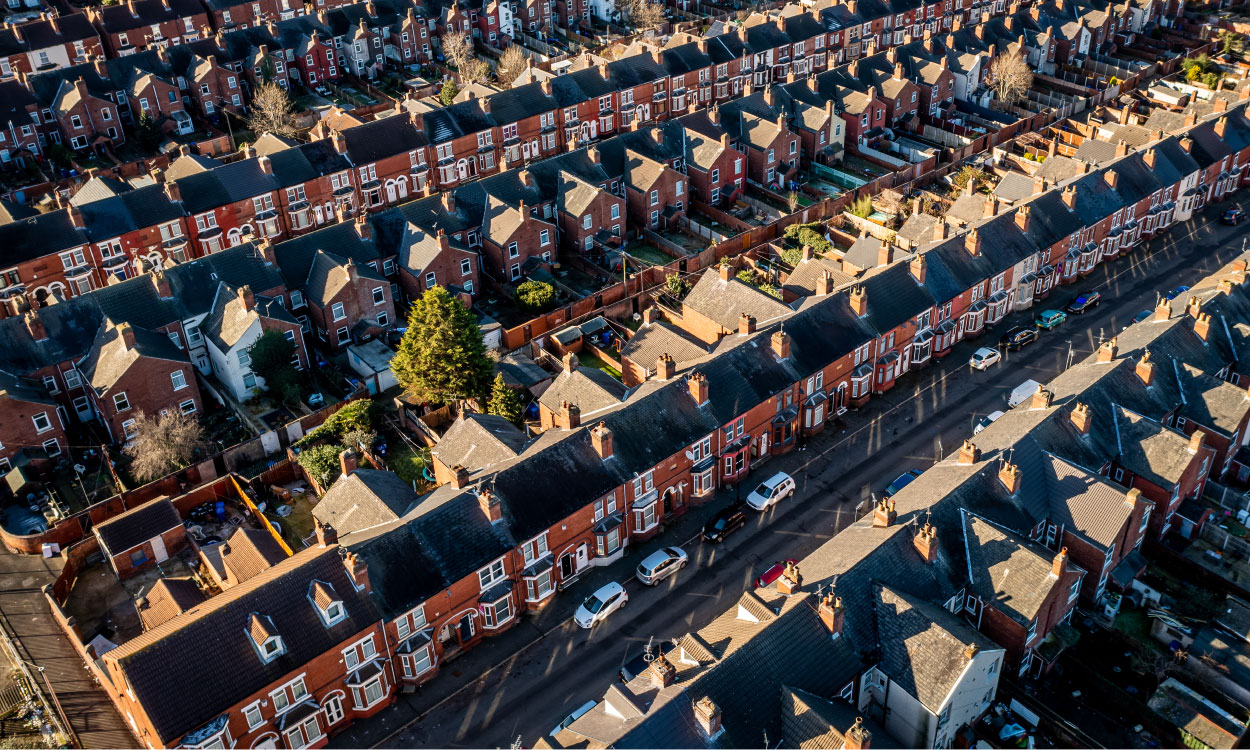The UK is full of so many different types of housing, and it can be tricky to understand which is which.
If you’re looking to buy, rent or invest in a property, it’s worth knowing the different types of housing options available to you. One of the most common housing types in the UK is terraced housing.
If you’re wondering ‘what is a terraced house?’ we’re here to help.
A terraced house is a property that is linked on either side by other properties. There are no gaps between properties, and they usually come in big rows with all walls connected.
Usually, terraced housing is found in dense towns and cities where there is less space for housing. In this article, we’ll explain exactly what a terraced house is, outlining all of the options on the market.

What Are Terrace Houses?
Terraced houses have a long, rich history in the UK dating back to the 1600s.
Initially, the concept of terraced housing was inspired by Italians who emigrated to the country during the 17th century. It was quickly realised that this type of housing was a great way to save space, and they really began to catch on in 1666.
Following the Great Fire of London, the capital needed serious rebuilding. Terraced housing was the solution and became a key foundation of the Georgian period.
Their popularity soared further during the industrial revolution. With the majority of the working class working in factories, business owners decided they wanted employees to live close to work in order to enhance productivity. In some cases, they even created entire streets located nearby to factories which were made up of terraced housing where workers could live with their families.
As mentioned above, a terraced house is a property that shares walls on both sides with neighbouring properties. Usually, these properties are two storeys and may include shared alleyways where residents can access gardens and rear outdoor spaces.
What Is A Mid-terraced House?
Almost every terraced house is a mid-terraced house.
They’re extremely easy to identify, as they’re any terraced property that is bordered on either side by two other houses. In any terraced street, every house will be considered mid-terraced other than the two on either end.
What is an end-terraced house?
Just like a mid-terraced house, end-terraced housing is also extremely easy to spot.
These are the only properties on the street which are not bordered on either side. Located at both ends of the street, end-terraced houses are the only homes on a terraced street that are bordered by just one house.
While this sounds like a semi-detached house, it’s important to note that this isn’t the case.
The distinction is that a semi-detached property is one that has been built as a pair and connected to one other property. Whereas an end-terraced house is built at the end of a long row of other connected properties.
While this might not seem like much of a difference, it’s important to be aware of the differing terms as the type of property you own or rent can impact insurance.
What are the benefits of terraced housing?
There are a whole host of advantages to terraced houses, if you’re considering purchasing or renting one, here are some of the benefits they can bring:
- Cost-effective – Typically, terraced housing is cheaper than other property options like detached and semi-detached homes. This makes them a great choice for first-time buyers or those on a budget.
- Space efficiency – Terraced houses are specifically built to maximise space. Often, this means you’ll receive a property with multiple floors that have great living spaces.
- A community feel – As they’re part of a row of houses that are connected, terraced housing can create a great sense of community among neighbours. This can lead to a strong social connection and a supportive neighbourhood environment.
- Low maintenance – Terraced walls often require less maintenance than detached options as walls are shared, meaning there are fewer external surfaces to maintain.
- Energy efficiency – Shared walls also bring the benefit of energy efficiency. This means they have better insulation in place and can maintain heat better than detached properties. As a result, owners may experience cheaper utility bills.
It’s also worth noting that the specific benefits of living in a terraced house can also depend on its location, design and the preferences of the individual. While some people may enjoy the community feel and other benefits of a terraced property, others may prioritise privacy. It all depends on what you prefer.
#Terraced #House